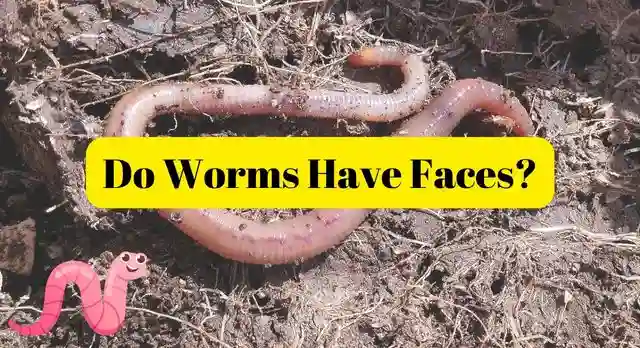Do Worms Have Faces? Explore Earthworm Face
Worms, these seemingly simple and often overlooked creatures, play a crucial role in our ecosystem. We know they are remarkable in their own right, but have you ever wondered if they possess faces? In this article, we will dive into the world of worm anatomy and explore the question: do worms have faces? Prepare to be amazed as we unravel the enigma of these fascinating organisms.
Do Worms Have Faces?
As we venture into the heart of the matter, let’s address the intriguing question: do worms have faces? The answer may not be as straightforward as you think. Unlike animals with well-defined faces, such as humans or dogs, worms do not possess traditional facial features like eyes, noses, or mouths. Instead, their anatomy is quite distinct.

Do earthworms have a head?
Certainly! Yes, Earthworms have a head, although it might not resemble what we typically associate with a traditional “head.” If you visualize the structure of an earthworm, which resembles a long, flexible tube, you’ll observe that one end of the tube appears slightly darker and more rounded compared to the other end. This darker and rounded section is what is commonly referred to as the “head” of the earthworm.
The earthworm’s head features a small elevated bump known as the “prostomium.” This specialized part aids the earthworm in sensing its surroundings, such as detecting vibrations in the soil or changes in light. Although the earthworm’s head may not exhibit the prominent features of creatures with eyes and mouths, it plays a crucial role in the earthworm’s locomotion and interaction with its environment.
Worm Anatomy: Understanding the Basics
To comprehend whether worms have faces, we need to explore their anatomy. The head of a worm is the anterior segment, and it contains sensory organs that help the worm navigate its environment. While it lacks eyes, worms have specialized cells called photoreceptors, which are sensitive to light and enable them to detect changes in brightness. These photoreceptors allow worms to perceive light and dark, which is essential for their survival and behavior.
Additionally, worms have chemoreceptors that help them sense chemicals in their surroundings. Through these chemoreceptors, worms can identify potential food sources or avoid harmful substances. Though not in the traditional sense, one could argue that these sensory organs function as a rudimentary form of a face, allowing worms to interact with the world around them.
Mouth and Feeding
As worms lack mouths, their feeding process differs significantly from animals with recognizable faces. Instead of biting or chewing, worms use their pharynx, a muscular tube-like structure, to engulf and consume organic matter from the soil. Their diet primarily consists of decaying plant material, leaves, and other detritus, making them vital decomposers in the ecosystem.
The Diversity of Worms
Now that we have a basic understanding of worm anatomy let’s explore the diverse world of worms. From the common earthworm to the bizarre-looking marine worms, their variations are both fascinating and awe-inspiring.
Earthworms
Earthworms, belonging to the Lumbricidae family, are perhaps the most familiar type of worm to us. These segmented creatures are renowned for their beneficial role in agriculture and gardening. Not only do they enhance soil structure by burrowing, but they also improve nutrient circulation, making the soil more fertile for plants.
Flatworms
Flatworms, also known as Platyhelminthes, exhibit a flattened and elongated body shape. Some flatworm species are free-living, while others are parasitic. Planarians are an example of free-living flatworms, found in freshwater environments, while tapeworms are notorious parasites that infect the digestive systems of various animals, including humans.
Marine Worms
Marine worms comprise a diverse group with unique adaptations suited for life in the ocean. One of the most extraordinary marine worms is the Bobbit worm (Eunice aphroditois), which ambushes its prey with lightning-fast strikes. There are also the beautiful feather duster worms (Sabellidae) that create stunning, intricate structures from their tubes.
Key Takeaway
The world of worms is a captivating realm of diverse species and unique adaptations. While worms may not possess faces in the conventional sense, their anatomy and sensory organs enable them to interact with their environment effectively. As they continue to play essential roles in ecosystems worldwide, their existence serves as a reminder that every organism, no matter how small, contributes to the intricate balance of life on Earth.
Next time you spot a worm wriggling through the soil, take a moment to appreciate the complexity hidden beneath its seemingly simple exterior. Understanding and respecting these fascinating creatures will undoubtedly deepen our appreciation for the wonders of the natural world.
What does an earthworm’s face look like?
Earthworms do not have faces like humans or animals. They lack eyes, noses, and mouths. Instead, they have sensory organs on their head that help them sense light and chemicals in their environment.
Have worms got faces?
Worms don’t have faces in the way we usually think of them. They don’t have traditional facial features like eyes, noses, or mouths. However, they do have sensory organs on their head that allow them to interact with their surroundings.
